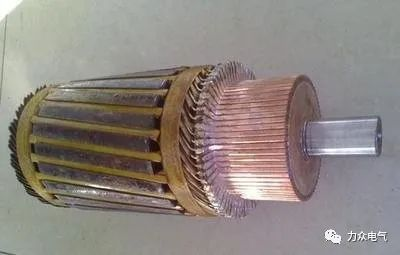An analysis of the rotor of the chute motor
Induction motors can generally be divided into cage type motors and wound type motors according to the structure of the rotor winding. Most of the cage-type rotor windings use cast aluminum rotors, that is, molten aluminum is cast in rotor core slots stamped from silicon steel sheets to form rotor windings. It is characterized by simple manufacturing process and low cost. In order to improve the starting performance and noise of the motor, the slots of the aluminum-injected rotors are generally opened into inclined slots with a certain inclination (the inclined slots run from the upper right to the lower left when the rotor is upright).

In cast aluminum rotors, inclined slots are commonly used, the main purpose of which is to weaken the tooth harmonic magnetic fields of the stator and rotor, thereby reducing the harmonic torque (improving starting performance), electromagnetic noise and additional loss caused by these harmonic magnetic fields.
1. Weaken low-order harmonics
In the air-gap magnetomotive force of a single-phase asynchronous motor, there are usually strong harmonic components. When the above magnetic harmonics are all low-order harmonics, their intensity is relatively large, and the impact on the starting performance of the motor is also relatively large. Using a reasonable rotor chute can weaken the most harmful low-order harmonics.
2. For noise improvement
Motor noise is mainly composed of three types of noise: mechanical noise, electromagnetic noise and gas dynamic noise. The existence of the rotor chute has a theoretical and practical effect on the improvement of mechanical noise and electromagnetic noise.

3. Improve electromagnetic noise



























 XINDA
XINDA